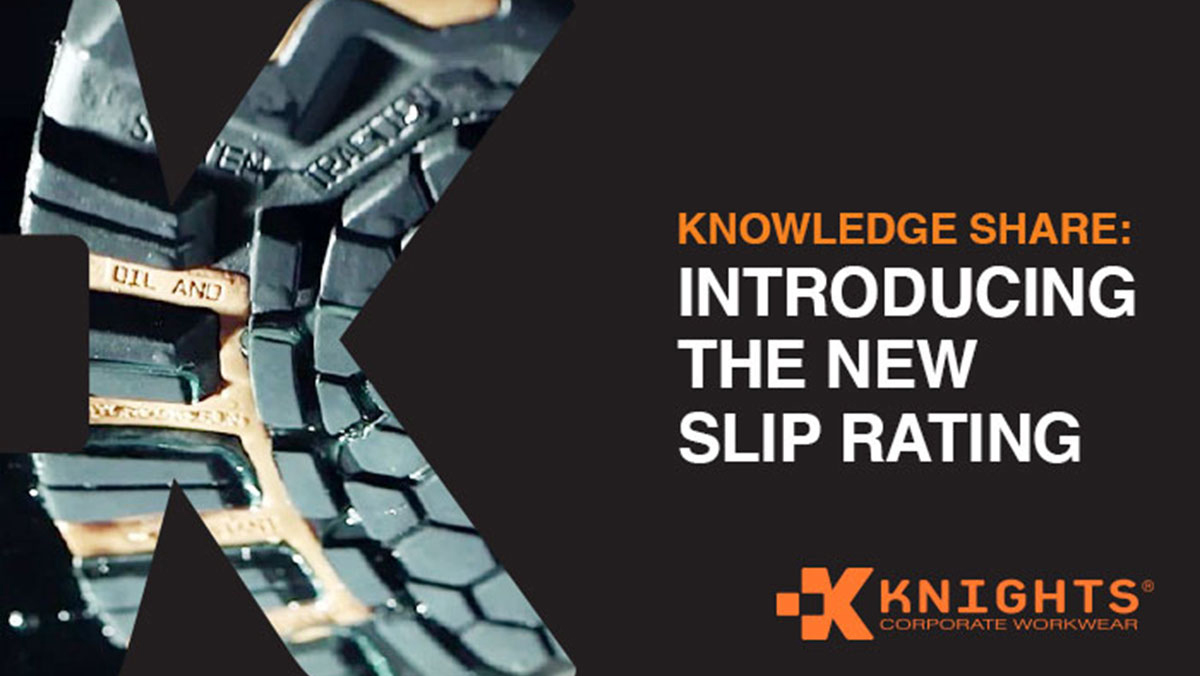New Slip Rating for Safety Footwear
Jul 13 2023 10:07AM

Standards for personal protective equipment (PPE) are constantly reviewed and updated to ensure the safety of workers. The standard which covers safety footwear – DIN EN ISO 20345 – has recently been revised. An important new requirement has been added – slip resistance. Without meeting the required standards, the footwear won’t carry the all-important SB symbol. Let’s recap some of the original list of requirements.
To be classed as safety footwear and given the SB symbol, the toe cap must:
- Pass a drop test at 200 joules of test energy (equivalent to 20kg from a height of approximately one metre)
- Withstand a static pressure test at 15 kilonewtons (around 1,500kg of pressure)
- Have an inside length appropriate for the shoe size (e.g., 39mm in sizes 41-42)
There are also strictly defined standards relating to corrosion resistance, non-toxicity and other properties of the sole and upper. Height, ergonomics and comfort of the footwear are also covered by the standard.
The update relating to slip resistance includes a test of the footwear’s ability to maintain a secure grip on a slippery surface. The test uses a soap solution – sodium lauryl sulphate – on floor tiles, a hazard that could easily be present in many workplaces. Slip-related accidents can, unfortunately, lead to severe injuries. This new criterion will help to ensure safety footwear provides reliable traction, reducing the risk of accidents.
The slip resistance test cannot be performed on some shoes, for example, those with metal spikes. In this case, footwear carries the symbol 'Ø' to indicate that the test is not applicable.
Manufacturers of safety footwear are now required to incorporate slip resistance testing as part of the certification process. As a result, workers can have greater confidence in the performance and reliability of their safety footwear, ultimately contributing to a safer work environment.
In addition to the test outlined above, further requirements have been included in the standard:
- Scuff cap (SC): A Martindale abrasion test of 8,000 cycles must be carried out. The overcap must not develop any holes across its entire thickness.
- Slip resistance (SR): This tests the slip resistance of the safety shoes on ceramic tiles with glycerine. When the heel slides forward, a coefficient of friction of >= 0.19 mm is allowed. When the front part of the shoe slides backwards, a coefficient of friction of >= 0.22 mm is allowed.
- Ladder grip (LG): To offer better grip on ladders, the outsole of a safety shoe must have a transverse profile with a height of at least 1.5 mm in the ankle area.
More info, help and advice
Updates to the standard will help to reduce risks in the workplace and protect workers, but details of tests performed in the laboratory can be somewhat obscure. If you would like any clarification of footwear designations or marking symbols, please get in touch.
And, of course, if you would like any help in selecting appropriate safety footwear for your team and workplace, please don’t hesitate to ask.
